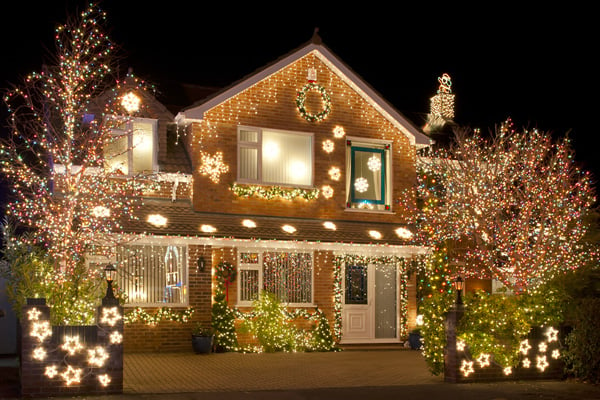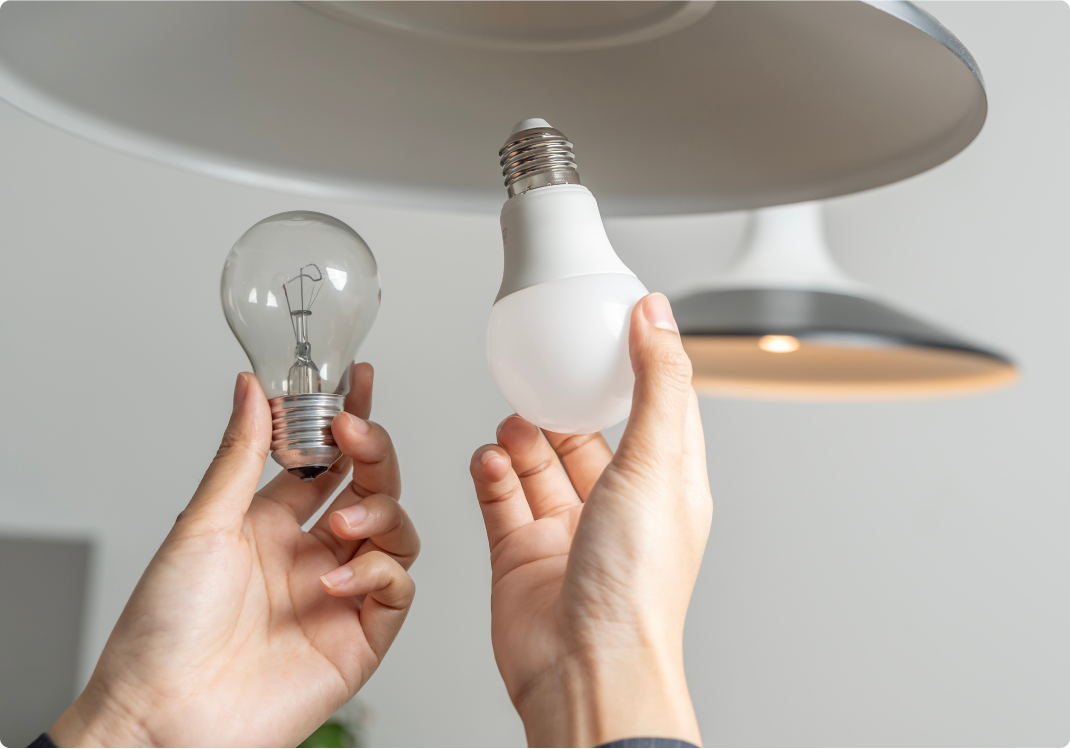
Light up Your House for the Holidays, Not Your Energy Bill

These energy-conscious lighting tips will help you save some money on your energy bill this holiday season, leaving you with more funds to spend on loved ones.
The holidays are a fun, but often expensive, time of year. It’s easy to blow budgets on gifts for loved ones and electric bills by making the season bright. Fortunately, saving money during the holiday season can be just as simple with a few energy-conscious lighting tips.
Look on the bright side
Substituting new LED holiday lights for run-of-the-mill incandescent holiday lights can give you big savings and make a big statement. LED (or light-emitting diode) lights are brighter than traditional lights, and they last longer while using far less energy. In fact, LED light strings can use 90% less energy than regular incandescent lights and last about ten times longer. When you shop, just make sure you’re getting what you pay for. Look for government and industry-approved energy-saving logos.
No matter what you choose, buying holiday lights can be expensive. So keep your eye out for manufacturer rebates and coupons, and be sure to check with your local utility provider to see if they offer any special rebates for LED decorations.
Besides being energy efficient, LED holiday lights offer other important advantages. They’re cooler than incandescent lights (which can help reduce fires), have no filament or glass to break, and can help prevent overloading sockets when you string them end-to-end. Believe it or not, using energy-efficient holiday lights like these can even help reduce carbon dioxide emissions.
Remember, you don’t have to limit your energy savings to just around the holidays. Using LED bulbs is a smart, energy-efficient choice any time of the year for lighting inside and outside your home.

Timing is everything
You can further reduce your holiday electric bill by limiting your light display to “primetime” hours. Extension cords with built-in timers can easily be found in most hardware stores. Make sure they’re suitable for outdoor use. Then, simply plug in your lights and set timers to turn on when it gets dark and switch off at bedtime. No sense lighting your home when few people are around to enjoy it. The same holds true at other times of the year with your standard outdoor lights. Instead of a timer, you can even use a motion sensor. That way, your outdoor lights will only go on when triggered.

Consider solar
Depending on how much sun exposure you get, solar-powered lights can be a great energy-saving solution. Even in winter, these lights can soak up enough sun to light up an outdoor tree without relying on electricity.

Get more bang for your buck
Here’s a smart tip to pump up the light without bursting your electric bill: Strategically place reflective ornaments or tinsel to bounce light in multiple directions. This will create a dazzling shimmery effect that tricks the eye into seeing more lights than are actually there.

Thinking about coverage?
Security for your home. Protection for your budget.
A little can go a long way
Here’s another efficient way to create lots of visual drama without having to add tons of additional lighting. Simply, use colored flood light bulbs in place of standard outdoor floods. You can find a variety of festive colors such as red, green, and blue. Then, position the lights so they bathe your home’s exterior in a warm, cheery glow.
You can achieve a lot with dramatic up-lighting. Focus them on your home or seasonal planters positioned along a walkway. Try flanking your front door for an added effect.
If that’s a little too much for your taste, just substitute colored light bulbs in a few of your exterior fixtures, such as on your porch, above your front door, or outside your garage. You’ll get pops of festive color with a more subtle effect.

Light the night with luminarias
During the holidays, you’ll often see these glowing lanterns in rows along a sidewalk or leading up a walkway to a front door. Luminarias are often made from brown paper bags that are weighted down with sand and lit from within by candles. A safer energy-efficient solution would be battery-powered LED luminarias. They’ll still create a classic, warm, and welcoming feel, just in a modern and eco-friendly way.

Create a warm glow
Speaking of battery-powered candles or candlesticks, using them in your front windows can also add light with limited energy use and cost. Look for scented varieties to add another layer of cheer. Create a warm glow throughout your home with holiday-themed votive holders illuminated with actual votive or battery-operated tea lights. Many of these flameless options are made to mimic the flickering of a real candle, so you can enjoy the atmosphere without any of the worry that comes with a real flame.
With so many wonderful options available today, you can be energy-conscious AND festive without having to compromise. Follow these energy conservation tips this holiday and, perhaps, you’ll be able to splurge on an extra gift just for yourself.
AHS assumes no responsibility, and specifically disclaims all liability, for your use of any and all information contained herein.
Don't worry. Be warranty.
Have a plan for your home when things don't go according to plan
Shop Home Warranties

